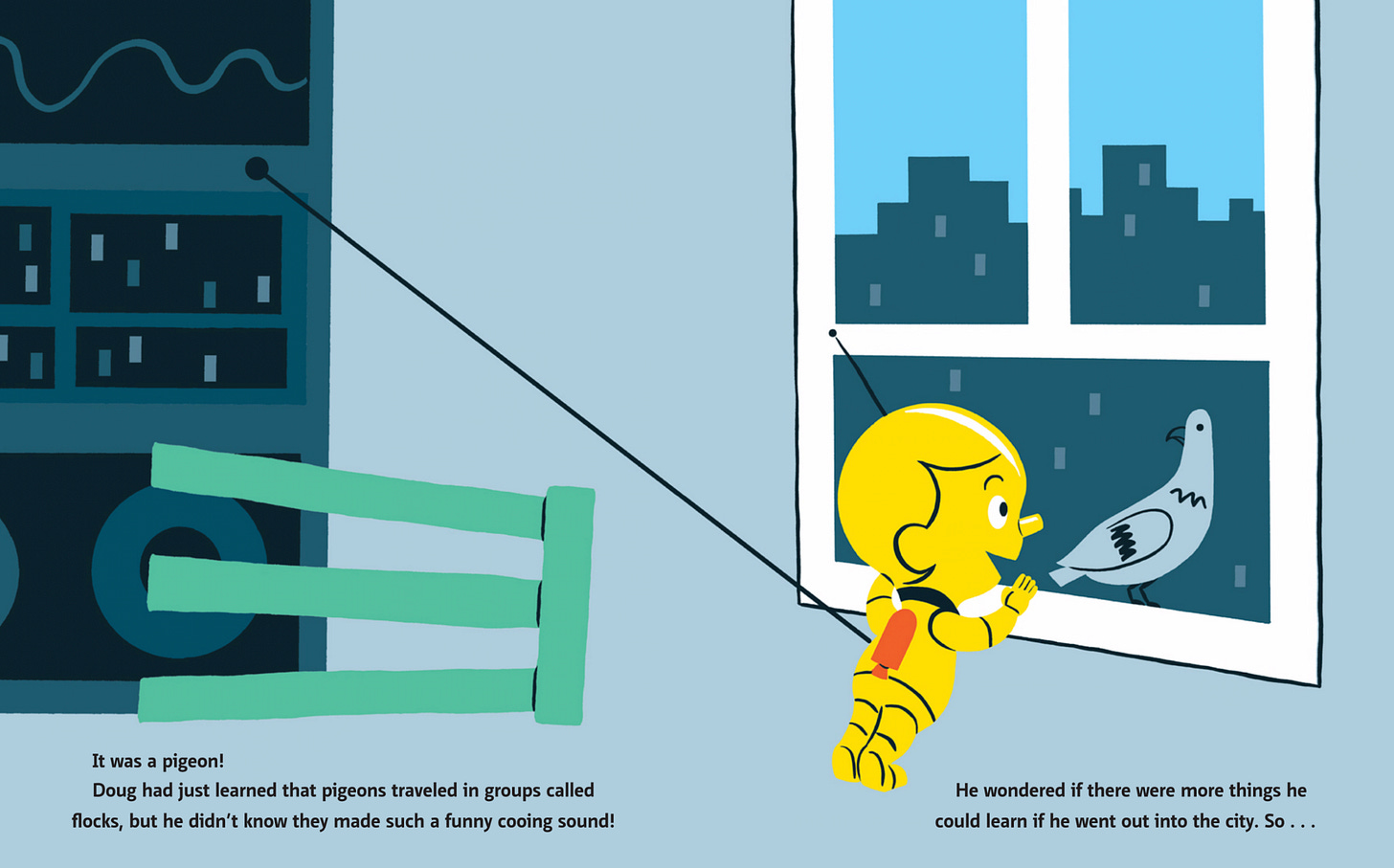A Kindergartener's Guide to AI, Qualia, Affordances, and Embodied Intelligence
Forget bats and black-and-white rooms, one of the best guides to the esoteric world of AI and experiential intelligence is a 2013 book written for kindergarteners
In the rarefied atmosphere of cutting-edge artificial intelligence, it’s become trendy to throw Thomas Nagel’s "What’s it like to be a bat”1 into conversations about AI and qualia (the fancy term for what it’s like to “feel” something). Or Frank Jackson’s thought experiment of “Mary’s Room”2 (or “Mary in the black-and-white room” if you’re going full-on Ex Machina).
Both of these explore (or at least related to) what researchers refer to as experiential (or embodied) intelligence—learning and understanding that comes from lived, embodied experiences rather than data alone. They touch on the ideas of qualia as something that transcends mere data, affordance as understanding what the physical world actually allows you to do, and embodied intelligence as the intelligence that comes from experiencing reality rather than simply learning about it.
But the intellectual ruminations that draw on them are missing a trick. Because one of the best books I’ve come across recently on AI, qualia, affordances, and embodied intelligence, isn’t an impenetrable philosophical paper, but a 2013 book written for elementary school kids: Dan Yaccarino’s Doug Unplugged.
One of the downsides of having grown-up kids is that you become disconnected from the world of K-6 literature. And so I was blissfully ignorant of Doug Unplugged until elementary school computer-science specialist Tara Menghini introduced me to the book this week (we were recording a future episode of Modem Futura with her).3
Doug Unplugged is the story of a kid robot who’s filled up with facts each day as his parents plug him in.4 But one day, after seeing and experiencing a pigeon on the window ledge, he wonders if there’s more to understanding than simply learning facts and figures through his daily download.
And so he unplugs and starts out on an adventure where he learns from experiencing the world directly. And as he does, he begins to feel things, and to understand in ways that he never could from his data feed.5
The book was written at a time of growing unease over digital immersion versus lived experience with children (sound familiar?). But 12 years on it’s also surprisingly relevant to emerging conversations around AI.
This was not lost on Tara, who uses it to explore the challenges and opportunities of living in an AI-infused world with her students. And as we chatted, I was intrigued by just how deeply the book connects with concepts such as qualia, the “action possibilities” that comes from learning through experience (affordances), and the connections between embodiment and intelligence.
So much so that, with a simple guide, this could be the perfect introduction to AI, qualia, affordances, and embodied intelligence.
The situations Doug experiences on his journey in the book can be roughly categorized into qualia (what he feels as a result of a physical experience), affordances (actions that become possible as he physically interacts with his environment) and embodied intelligence (what he is able to understand and achieve as a result of hands-on experiences).
For instance, as Doug experiences the city, he learns that “if you fly into a flock of pigeons they scatter,” that “crowded sidewalks make it hard to see where you’re going,” and that “there are all sorts of different ways to play” when you are actually on a playground with other kids—all examples of physical affordances.
He also discovers that “subway trains s-c-r-e-e-e-e-c-h-e-d their way around corners,” is amazed at the view from the top of a skyscraper, and finds out that “cool water in a park fountain feels good on a hot day.” These are all examples of qualia—that property of feeling through experience that goes beyond anything you could understand through simply knowing facts.
And through his physical interactions with the city and with people he engages with, he learns and grows in ways that would have been impossible through data dumps alone.
Of course, to any elementary school student this all feels obvious. But that’s the point.
Most people struggling to make sense of the growing influence of AI on pretty much everything around us would blanch at the thought of grappling with Jackson’s original Epiphenomenal Qualia, or Nagel’s What Is It Like to Be a Bat?
But strip away the stigma of actually learning something from an elementary school book, and Doug Unplugged is a surprisingly good place to start.
Which is pretty amazing, given it was written years before most people had heard of LLMs and generative AI!
For the Chicago Manual of Style 17th edition purists: Thomas Nagel, “What Is It Like to Be a Bat?” The Philosophical Review 83, no. 4 (October 1974): 435–50.
Similarly, Frank Jackson, “Epiphenomenal Qualia,” The Philosophical Quarterly 32, no. 127 (April 1982): 127–36.
The episode of Modem Futura with Tara will be airing in a couple of weeks—essential listening if you are even the slightest bit interested in AI and elementary education.
I know I’m anthropomorphizing here, but you try and write an engaging and slightly snarky piece about a robot in a kid’s book while referring to it as “it”—in a very meta sense you get the data but completely lose the “qualia!”
The parallels with LLMs here are worth thinking about for a second. The daily data download might be seen as pre-training. Doug’s pre-city “intelligence” as data-driven perspectives reminiscent of current AI apps, the unplugging as the move from virtual AI to embodied AI, and the shift from knowing to feeling a commentary on the importance of embodiment on human-like intelligence.






I use 3 Dan Yaccarino books in an author study to help elementary kids think through the pros and cons of life with bots: https://www.teachdigcit.com/product-page/ai-ethics-a-dan-yaccarino-author-study?srsltid=AfmBOoog8DFkmsyRmo32FuVxjeMcmeYHqnA42jQCoc3qPLJs2nubcOWc